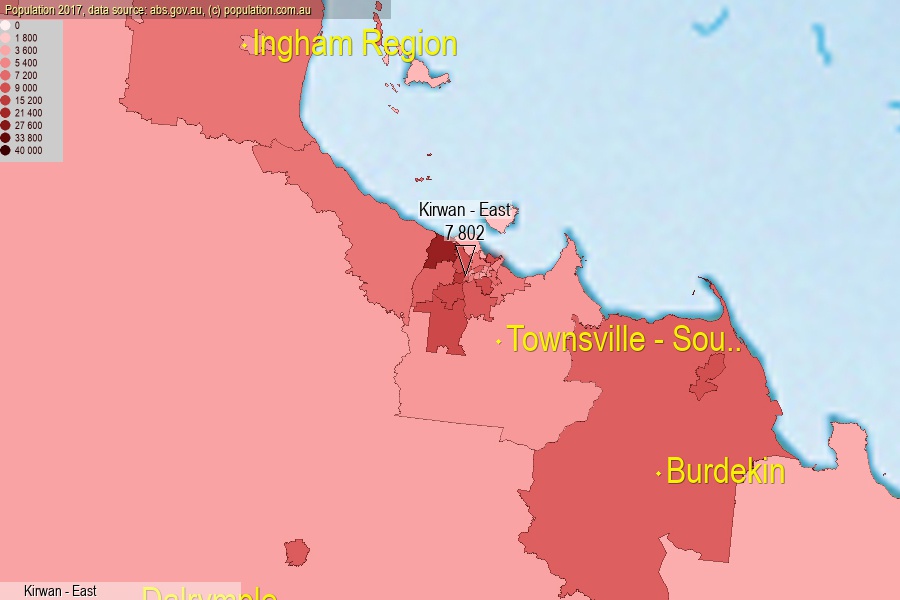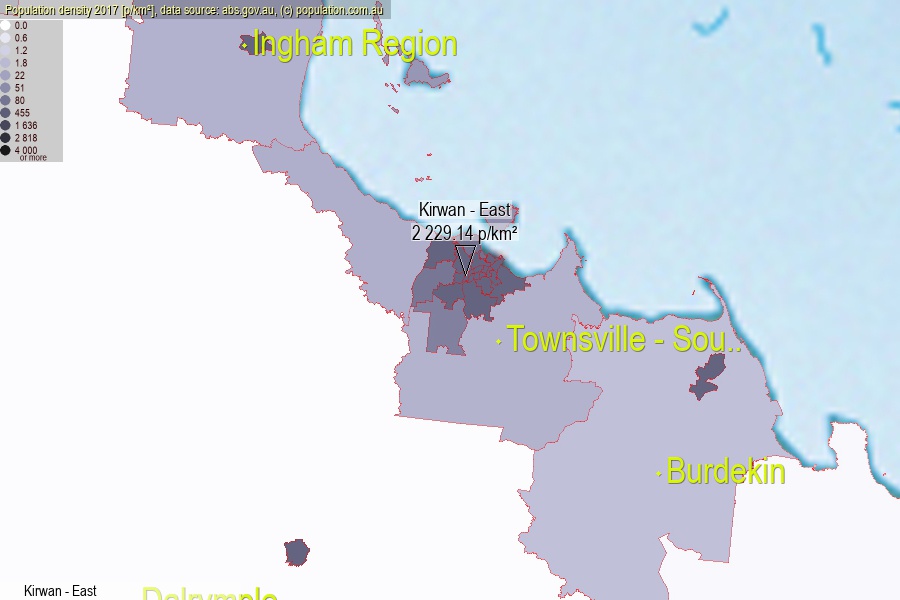 population.com.au
population.com.auLast official estimated population of Kirwan - East (as Statistical Area Level 2) was 7 802 people (on 2017-06-30)[2]. This was 0.03% of total Australian population and 0.156% of QLD population. Area of Kirwan - East is 3.50 km², in this year population density was 2 229.14 p/km² . If population growth rate would be same as in period 2016-2017 (-1.85%/yr), Kirwan - East population in 2025 would be 6 720. [0]



Click to enlarge. Kirwan - East is located in the center of the images.
Population [people], population density [p./km²] and population change [%/year] [2]
View borders » (new window) [4]
[1991-1992] -0.46 %/Yr.
[1992-1993] -0.93 %/Yr.
[1993-1994] -2.29 %/Yr.
[1994-1995] -2.48 %/Yr.
[1995-1996] -1.50 %/Yr.
[1996-1997] -0.47 %/Yr.
[1997-1998] -1.32 %/Yr.
[1998-1999] -1.31 %/Yr.
[1999-2000] -0.79 %/Yr.
[2000-2001] -1.11 %/Yr.
[2001-2002] -1.50 %/Yr.
[2002-2003] +0.18 %/Yr.
[2003-2004] +0.26 %/Yr.
[2004-2005] -0.27 %/Yr.
[2005-2006] -1.79 %/Yr.
[2006-2007] -0.75 %/Yr.
[2007-2008] +0.53 %/Yr.
[2008-2009] -0.63 %/Yr.
[2009-2010] -1.50 %/Yr.
[2010-2011] +0.32 %/Yr.
[2011-2012] -0.39 %/Yr.
[2012-2013] -0.57 %/Yr.
[2013-2014] -1.15 %/Yr.
[2014-2015] -1.30 %/Yr.
[2015-2016] -2.11 %/Yr.
[2016-2017] -1.85 %/Yr.
[0] Calculated with linear interpolation from officially estimated population
[1] Read more about SA2 and Australian Statistical Geography Standard (ASGS) on abs.gov.au
[2] Population data from Australian Bureau of Statistics (Population and density: 2017; change: 2016-2017)
[3] Digital Boundaries: Australian Statistical Geography Standard (ASGS) 2016.
[4] Border coordinates are simplifyed using Ramer-Douglas-Peucker algorithm.